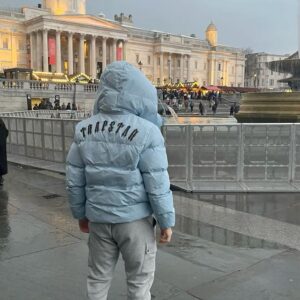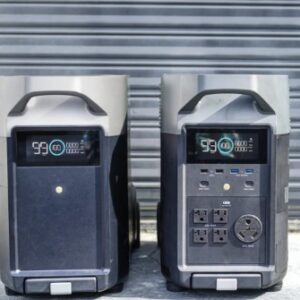Canadian winters are beautiful—snowy landscapes, frosted mornings, and cozy evenings. But behind this postcard-perfect season lies a challenge that every homeowner understands: cold temperatures that freeze pipes, strain heating systems, and test the durability of every piece of home equipment. From door frames that contract to vehicles that struggle to start, winter spares nothing.
Yet when it comes to house elevators and residential lifts, many homeowners worry even more. Traditional elevators often depend on hydraulic oils, heavy machinery, and complex metal systems—all vulnerable to extreme cold. When temperatures shift from mild fall breezes to bone-chilling –20°C cold snaps, performance issues become common.
That’s exactly why a new generation of technology—energy-efficient elevators for Canadian winters—is becoming essential. And leading this transformation is Nibav, a brand engineered to withstand the country’s harshest climates with ease.
The Winter Challenge: Why Elevators Struggle in Cold Weather
Canadian winters aren’t just cold—they’re unpredictable. Homeowners can experience:
-
Sudden temperature drops
-
Heavy snowfall
-
Freezing wind chills
-
Icy moisture levels that cause condensation
-
Dry air that affects rubber seals and gaskets
Traditional elevators face common issues:
-
Hydraulic oil thickening
-
Slowed response times
-
Motor strain
-
Door malfunctions
-
Reduced lubrication
-
Higher electricity consumption
In older systems, homeowners often hear noises, feel jerky stops, or face delays—all because the equipment wasn’t built for an extreme climate.
Nibav’s technology is different. Instead of struggling through cold weather, it performs the same in January as it does in July.
Why Nibav Elevators Are Built for Canadian Winters
1. No Hydraulic Oil = No Cold-Weather Freezing or Thickening
Hydraulic elevators suffer the most in Canadian winters because oil becomes more viscous in freezing temperatures. This leads to:
-
Sluggish movement
-
Pressure drops
-
Higher maintenance needs
Nibav eliminates this problem entirely.
Nibav elevators use air-driven pneumatic technology, meaning:
-
No oil
-
No lubrication problems
-
No temperature-dependent machinery
The result? Smooth performance regardless of the weather outside.
2. A Fully Sealed System That Blocks Out Cold Air
In winter, cold drafts can creep into homes through poorly sealed structures. Nibav’s elevators are made with an airtight cylindrical design, ensuring:
-
No air leakage
-
No cold air entering the home through the lift
-
Stable internal temperature
This design is ideal for regions like Ontario, Alberta, Manitoba, and Quebec where winters are especially harsh.
3. Energy-Efficient Elevators Designed for Canadian Homes
Winter already increases energy bills. Heating systems work overtime, and every additional appliance adds to the load. But Nibav’s energy-efficient elevators for Canadian climates are different.
Nibav uses:
-
Minimal electrical consumption
-
A vacuum system for lift movement
-
Gravity for descent, which requires almost no energy
This means winter energy usage stays balanced—no spikes, no surprises, and no stress on home electrical systems.
4. Temperature-Stable Materials for Long-Term Durability
Most traditional elevators use metals heavily affected by cold. Contraction, expansion, and moisture can compromise long-term reliability.
Nibav elevators use:
-
Aerospace-grade polycarbonate
-
High-density aluminum
-
Rust-resistant frames
-
Moisture-resistant seals
These materials maintain structural integrity regardless of temperature fluctuations, preventing:
-
Cracking
-
Condensation
-
Rusting
-
Noise due to metal expansion
Homeowners get consistent performance—year after year.
5. Designed for Homes With Winter Power Outages
Canadian winters often bring storms, heavy snow, and unexpected blackouts. A home elevator must be prepared.
Nibav’s system includes:
-
Emergency battery backup
-
Safe-descent technology
-
Low-power requirements
Even if power goes out, the elevator safely descends to the nearest level, giving residents peace of mind during winter conditions.
6. No Machine Room, No Pit, No Cold Zones
Traditional elevators often place equipment in uninsulated areas like basements, garages, or outdoor shafts—spaces brutally affected by winter temperatures.
Nibav requires:
-
No pit
-
No shaft
-
No machine room
Everything is self-contained inside a climate-controlled home environment. This is one of the biggest advantages for Canadian properties.
7. Quiet Operation Even in Extreme Cold
Cold weather can cause mechanical parts in traditional elevators to make loud noises. Nibav’s pneumatic operation eliminates much of this friction-based noise.
Homeowners get:
-
Whisper-quiet travel
-
No grinding sound in cold months
-
Smooth start and stop even during deep freezes
Perfect for winter nights when the home is quiet and cozy.
A Winter-Ready Solution for Canadian Families
Whether it’s seniors aging in place, families with mobility challenges, or homeowners who simply want comfort and convenience, winter reliability is non-negotiable.
Nibav elevators offer:
-
Zero weather-related performance issues
-
Energy savings during peak winter months
-
Consistent smooth operation
-
Cold-resistant engineering
-
Safe, reliable accessibility year-round
In a country where winter dominates nearly half the year, this technology isn’t just beneficial—it’s essential.
Conclusion: Built for Canada, Built for Winter
Canadian winters may be harsh, but your elevator experience doesn’t have to be. With advanced engineering, airtight construction, and energy-efficient technology, Nibav has redefined what it means to live comfortably and safely throughout the cold season.
For homeowners seeking house elevators and residential lifts that can handle the toughest weather conditions, Nibav stands out as the clear choice—crafted for Canadian homes, Canadian families, and Canadian winters.




